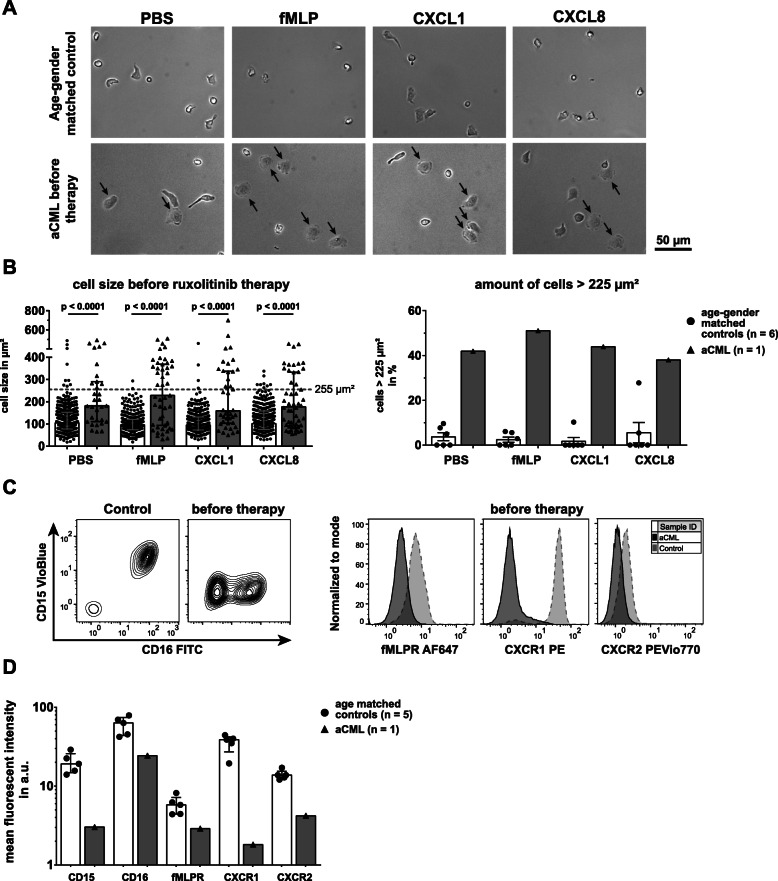Fig. 2.
aCML neutrophils show distinct morphologic changes and reduced expression of surface CD16, CD15, fMLPR, CXCR1 and CXCR2. a The first frame of image sequences acquired during video microscopy of neutrophils from an age- and gender-matched control (top) and the aCML patient before therapy (bottom). From left to right, the cells were treated with PBS as a control, fMLP [10 nM], CXCL1 [100 ng/ml] and CXCL8 [100 ng/ml]. Black arrows in the lower panel indicate prominently enlarged cell bodies. Magnification: 20x. b Statistical summary of the cell size in μm2 of aCML neutrophils before therapy (left) and the relative number of neutrophils with a cell size of > 225 μm2 (right). Both parameters were compared to age- and gender-matched controls (n = 6). On average, 41 and 56 cells per condition were analyzed in age- and gender-matched controls and the aCML patient, respectively. Bars are given as median ± interquartile range and the given p-values were calculated using Mann-Whitney U test. The cutoff of 225 μm2 (grey dashed line, left) was chosen as assuming a perfect circle equals a diameter of 16 μm and is thus close to a neutrophil’s normal diameter in cell culture [29]. c Representative contour plots and histograms of purified neutrophils. Analyses of CD16 (FITC) and CD15 (VioBlue) (left) and fMLPR, CXCR1 and CXCR2 (right) expressions are shown. An age- and gender-matched control (control, left of left panel; dotted light grey line of right panel) and aCML neutrophils before ruxolitinib therapy (before therapy, right of left panel; solid dark grey line of right panel) are depicted. d Statistical summary of expression levels for CD16, CD15, fMLPR, CXCR1 and CXCR2 on purified neutrophils from age- and gender-matched controls (controls; black dots, white bars; n = 5) and aCML neutrophils before treatment (before therapy; black triangles, grey bars; n = 1). Expression levels are given as the mean fluorescent intensity (mfi) and bars are given as median ± interquartile range

